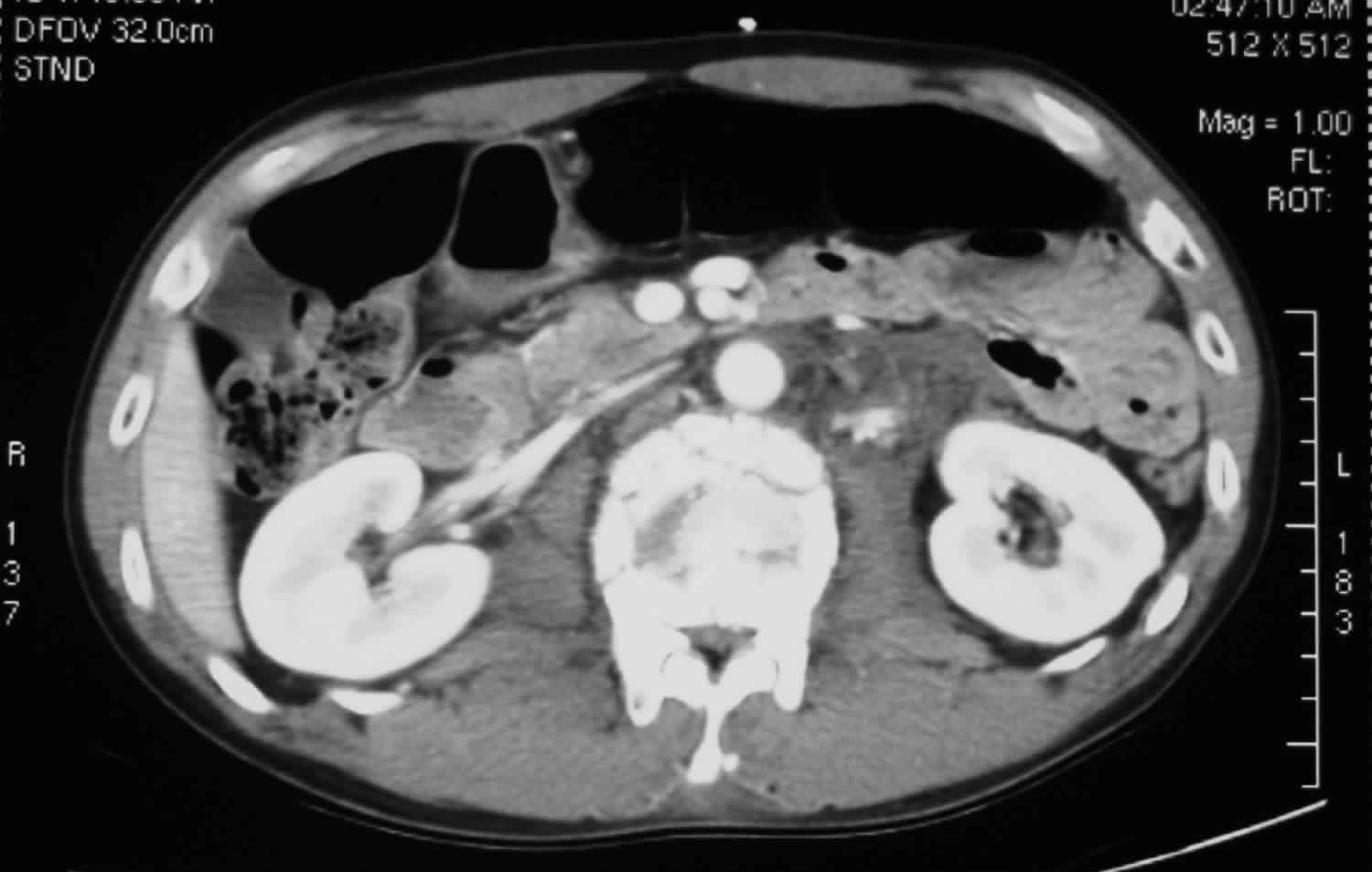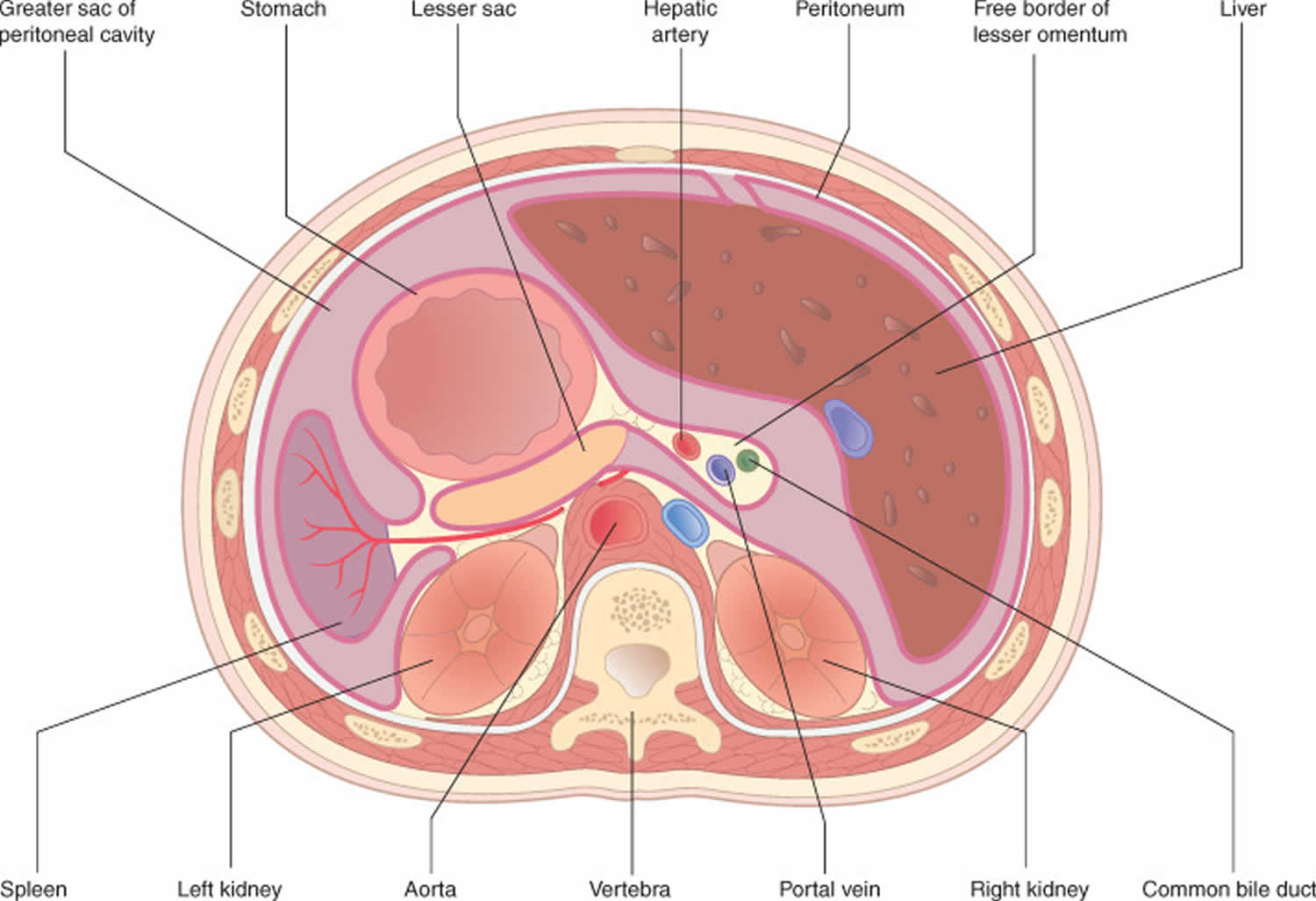Retroperitoneal bleed
Retroperitoneal bleed or retroperitoneal hemorrhage is potentially life-threatening conditions. Retroperitoneal hemorrhage can be a source of significant yet occult blood loss. Common causes of retroperitoneal hemorrhage are cardiac catheterization and trauma.
The retroperitoneum is a large space bounded anteriorly by the posterior parietal peritoneum, posteriorly by the transversalis fascia, and superiorly by the diaphragm. Inferiorly, it extends to the level of the pelvic brim.
Figure 1. Peritoneal cavity
Causes of retroperitoneal bleed
Retroperitoneal bleed cause include 1:
- pelvic, abdominal or lumbar trauma (e.g. pelvic fractures)
- traumatic vascular injury
- blood dyscrasia or coagulopathy
- rupture aortic aneurysm (e.g. abdominal aortic aneurysm)
- interventional or surgical procedures
- bleeding from underlying renal or adrenal pathology (e.g. renal angiomyolipomas; renal trauma)
- anticoagulation/fibrinolytic therapy
- rarely spontaneous retroperitoneal hemorrhage or idiopathic retroperitoneal hematoma 2.
Retroperitoneal bleed signs and symptoms
Retroperitoneal bleed signs and symptoms are varied depending on the amount of retroperitoneal hemorrhage present, rate of onset and ability of the surrounding structures to contain the hemostatic system. The classical features are:
- acute abdominal and/or flank pain
- hypotension
- anemia
However, presentation is often non-specific with a lack of cutaneous bruising or other localizing signs that can mean a delay in presentation and diagnosis.
Retroperitoneal bleed diagnosis
Enhanced CT scan of the abdomen is the principle method of diagnosis and will also delineate the site and size as well as rule out other causes of retroperitoneal hemorrhage 3.
Retroperitoneal bleed treatment
Retroperitoneal bleed treatment is based on the overall clinical context and vitals signs of the patient, the cause and stage of the retroperitoneal hemorrhage.
- Al-Khulaiwi A, Razaak FA, El Shair A, Bamehriz F. Idiopathic retroperitoneal hematoma. Ann Saudi Med. 2000;20:270–1.[↩]
- Monib S, Ritchie A, Thabet E. Idiopathic retroperitoneal hematoma. J Surg Tech Case Rep. 2011;3(1):49–51. doi:10.4103/2006-8808.78475 https://www.ncbi.nlm.nih.gov/pmc/articles/PMC3192516[↩]
- Stewart BT, McLaughlin SJ, Thompson GA. Spontaneous retroperitoneal haemorrhage:a general surgeon’s perspective. Aust N Z J Surg. 1998;68:371–3.[↩]







